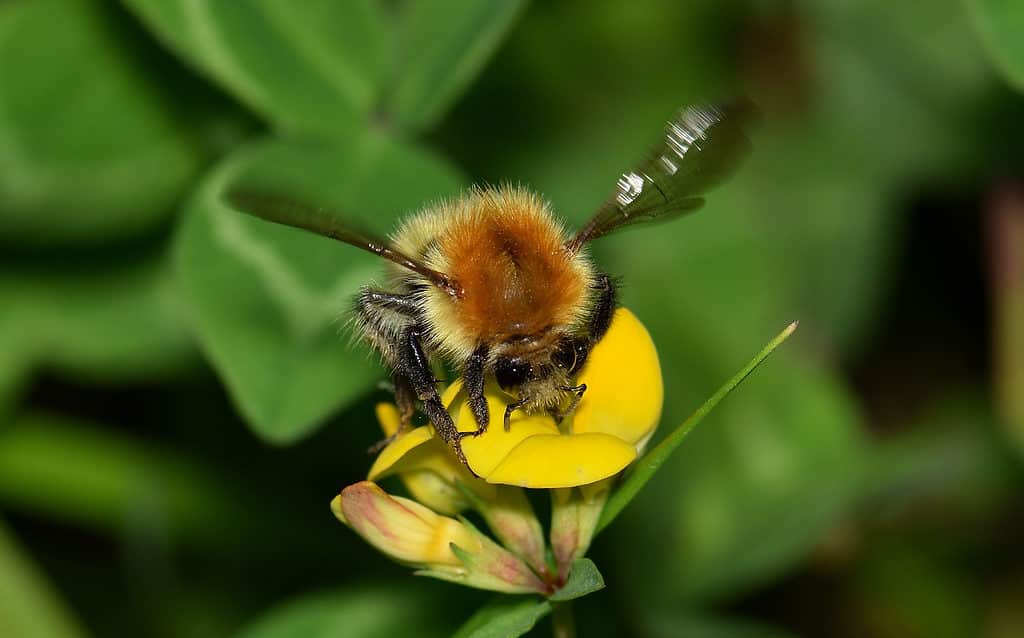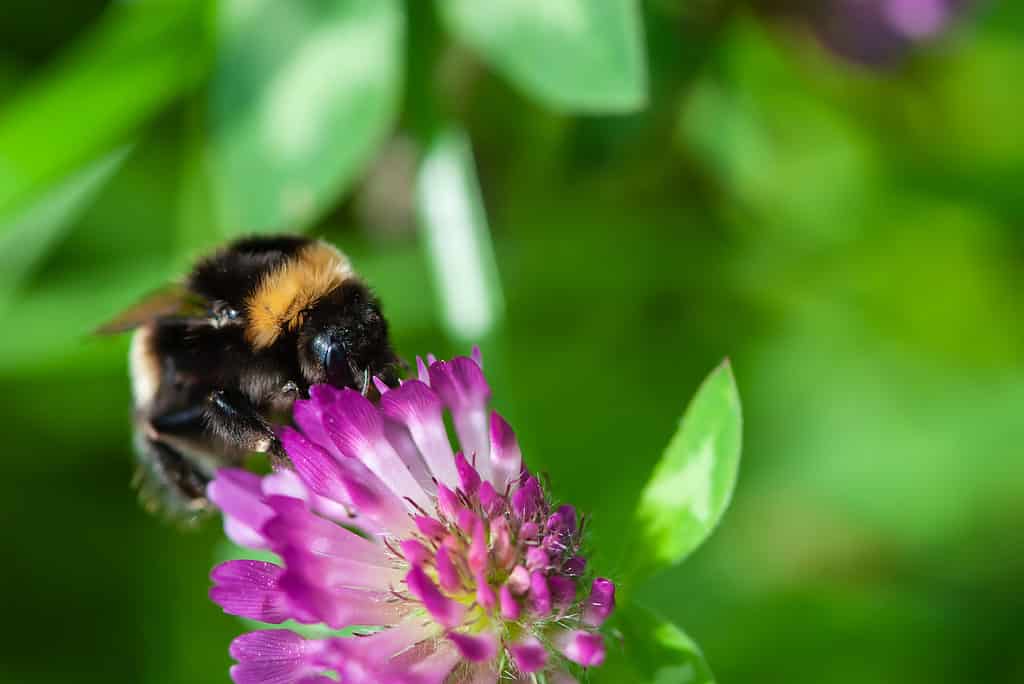Bumble bees are an important part of the environment. They are pollinators that drink nectar and spread pollen. Bumble bees come in all shapes, sizes, and colors. They aren’t all small yellow-flying bugs. For example, the largest bumble bee in the world is the Bombus dahlbomii, but sadly they are threatened. The population is declining. Follow along to discover more about the largest bumble bee in the world and why it’s considered threatened.
About the Bombus Dahlbomii
The largest bumble bee species is the Bombus dahlbomii, also known as the moscardón. It thrives in southern South American temperate forests. This large bumble bee is so big, it’s often described as a “flying mouse”. British ecologist David Goulson refers to these large bumble bees as “monstrous fluffy ginger beasts”.

This species of the bumble bee is known for its red-orange coloring and can grow up to four centimeters long from head to tail.
©iStock.com/Wirestock
Size and Appearance
Bombus dahlbomii are red-orange. Typically, the abdomen is lighter than the thorax of the bee, with some discoloration towards the end. Like other bumble bees, they also have black coloration on their legs, heads, and wings region. Their abdomen is covered in long bristles. Bombus dahlbomii have short antennae and a rounded tip. These bees also look very furry. Queen bees are the largest bees in the colony. They grow up to 4 cm long from head to tail, weighing between 0.5 to 1.5 grams, making them the largest bumble bee in the world.
Distribution
These large bumble bees are found all across South America. It’s also the only native bumble bee species in southern South America. It is endemic to central/southern Patagonia. In the same region, it coexists with two other bumble bee species in the same genus, Bombus terrestris, and Bombus ruderatus. They are especially found in Chile and Argentina. They are confined to southern South America, however, some people have claimed to see them outside of South America. These claims were never proven.
Diet
Bombus dahlbomii are foragers. They eat pollen and nectar. When possible, these bumble bees collect nectar from plants close to their nesting site. Some of the most common plants they forage from include Chilean bellflowers, Peruvian lilies, Chilean fire trees, ulmo, and Chilean lantern trees. Since they are heavy, they are slow forages and take more time compared to other bumble bee species.
Behaviors
Bumble bees live in colonies and form unique relationships with each other. The queens of this species start colonies in the spring. They begin by looking for underground cavities. The queen forages for pollen and wax and creates an egg cell structure. She then produces her first brood of eggs. In a few months, these hatched eggs become worker bees and take over for the queen. B. dahlbomii nests are large, sometimes containing up to 100 working bees.
Color detection is another important part of Bombus dahlbomii behavior. For example, they are unable to see red. However, unlike other bumble bees, Bombus dahlbomii visit red flowers and forage for nectar. They rely on the L-receptor system to detect and distinguish the color red.
Classification Status
While Bombus dahlbomii are not endangered, they are classified as threatened. Sadly, fewer and fewer Bombus dahlbomii are seen throughout Central Chile, but why? The largest bumble bee in the world is being wiped out by other non-native and invasive bumble bee species. The decline is rapid and started when Bombus ruderatus and Bombus terrestris were imported to Chile for commercial pollination in agriculture. During 1982 and 1983, hundreds of Bombus ruderatus queens were brought to Chile from New Zealand to pollinate red clovers. Although both of these European bumble bee species are found across South America still, people continue to ship Bombus terrestris colonies to Chile. Not only are the three bumble species competing for food resources, but they are also being killed off by diseases.
This brings a lot of problems for the environment. For example, Bombus ruderatus and Bombus terrestris, are pollinating invasive plant species in South America, like the Scotch broom. It’s hard for Bombus dahlbomii to compete since there are a lot more Bombus ruderatus and Bombus terrestris. The Bombus dahlbomii are also slow fliers and take their time collecting nectar compared to the other two non-native bumble bee species.

Bumblees can come in colors other than yellow and black, such as the
Bombus dahlbomiiwhich has orange coloring.
©iStock.com/Tanja Nik
Fun Facts About Bumble Bees
- Bumble bees come in all different colors, not just black and yellow.
- While bumble bees can produce honey, it’s not the honey we consume. Typically, beekeepers don’t gather honey from bumble bees.
- Bumble bees use their five eyes when picking up on colors and foraging.
- Unlike honeybees, bumble bees only sting when they feel threatened. They are not aggressive and males cannot sting.
- Bumble bees can sting multiple times. They don’t die after one sting.
- Although bumble bees are common almost everywhere in the world, some species are dying and in danger including Suckley’s cuckoo bumble bee and Franklin’s bumble bee.
- There are about 250 extant bumble bee species belonging to the genus Bombus.
Up Next
- What Do Carpenter Bees Eat? – A Guide to Their Diet
- Killer Bee vs Honey Bee: What are the Differences?
- Mason Bee vs Honey Bee: What Are the Differences?
- Carpenter Bee vs Bumble Bee: What’s the Difference?
The photo featured at the top of this post is © Jody./Shutterstock.com
Thank you for reading! Have some feedback for us? Contact the AZ Animals editorial team.







